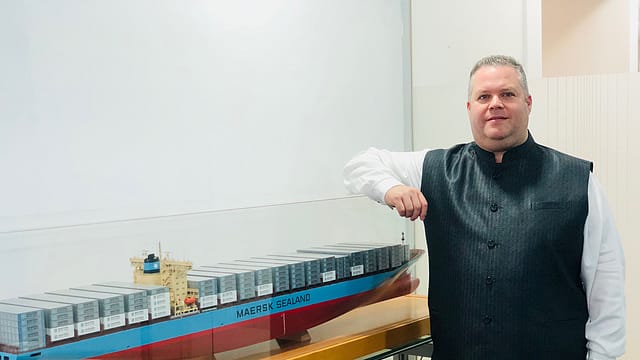Road, rail connectivity is a challenge: Maersk Line’s Steve Felder
ADVERTISEMENT

Steve M. Felder, the managing director of Maersk Line (India, Sri Lanka, Bangladesh, Nepal, Bhutan, and the Maldives), tells Fortune India in an exclusive interview that the container and cargo market in India is growing every year, and forecasts a healthy growth over the year. He also says that with new ports coming up in India, there is ample capacity to cater for growth, but rail and road connectivity remains a challenge. Edited Excerpts:
What major opportunity do you see in India?
The growth in the market is very respectable, wherein the containerised market is growing at 8% to 10% every year. A lot of opportunities come with growth. The recent relaxation of the cabotage restrictions [shipping of goods between two places in the same country ] present opportunity to make Indian ports more competitive and grow the pie.
The other significant opportunity we see is in the overall supply chain, where customers are asking us more and more to take care of bigger chunks of the supply chain and simplify it. We see an opportunity to provide more end-to-end services to them.
Why the supply chain, and what investments have you made?
January 2026
Netflix, which has been in India for a decade, has successfully struck a balance between high-class premium content and pricing that attracts a range of customers. Find out how the U.S. streaming giant evolved in India, plus an exclusive interview with CEO Ted Sarandos. Also read about the Best Investments for 2026, and how rising growth and easing inflation will come in handy for finance minister Nirmala Sitharaman as she prepares Budget 2026.
For most of our import and export customers, the core business is not logistics, but manufacturing, trading, retail, etc. Hence, increasingly our customers have been demanding that we take care of all the aspects of the logistics supply chain. This indicates the credibility we have with our customers and their discretion of relying on the experts.
First of all, in terms of expansion… not only to port-to-port shipments but also to inland delivery. The second one would be trade finance, which we introduced a couple of years ago in the Indian market. It is proving to be quite popular with customers. Thirdly, the customers who are moving perishable/reefer cargoes are also demanding for us to take care of broader aspects of cold chain industry.
We have been looking at various kinds of investments to address these emerging needs. For example, APM Terminals recently opened a state-of-the-art cold chain facility in Chennai, which helps with the transportation and storage of goods such as fish, food, and medicines. This is the first investment we have made in Chennai, and we are constantly evaluating the opportunities that exist in India.
How do you forecast the container trade growth in India?
We have seen an annual compound annual growth rate in container demand in India grow at at 8% to 10% for the past five years. If we look at the Q1 of this year, we saw a 7% growth in export and a 16% growth in import. Overall, it was 11%. In general, we see a strong growth rate for the rest of the year.
The major impact of demonetisation and GST has subsided. In South Asia, we are serving around 20% of the global population, and we see new consumers coming in every year. We have a rising middle-class, and the government export programme like Make in India. Overall, there is a lot of momentum in the market. We are bullish of the market.
What challenges do you face while operating?
For our customer, lot of the challenge is still related to infrastructure and IT. What we see is that the hinterland market is growing faster than the coastal market. So connectivity and infrastructure becomes a key.
Today, we have ample port capacity in India. With new ports coming up in the east coast and a new terminal in Nhava Sheva [near Mumbai], there is ample capacity to cater for growth. But connectivity is a challenge in terms of road network and rail capacity for container movement. Also, many ports suffer from draft restrictions. There is a need for digitisation of processes further to enable quicker clearances of cargo. More integration can be done with the port community system among all the key actors in the supply chain.
Have recent initiatives such as Bharat Mala and Sagar Mala been helpful?
We fully support initiatives like Bharat Mala or Sagar Mala, or dedicated freight corridors. All these are building blocks for creating an efficient supply chain.
